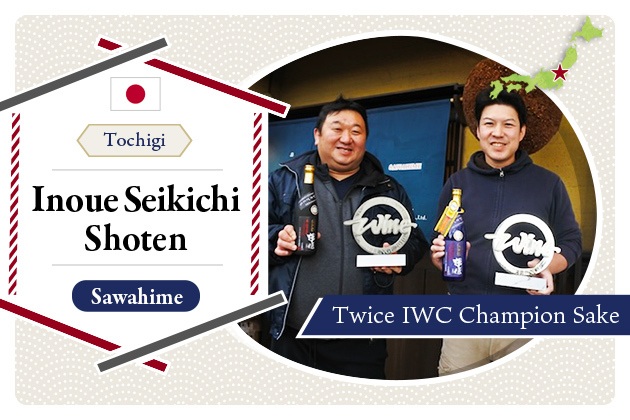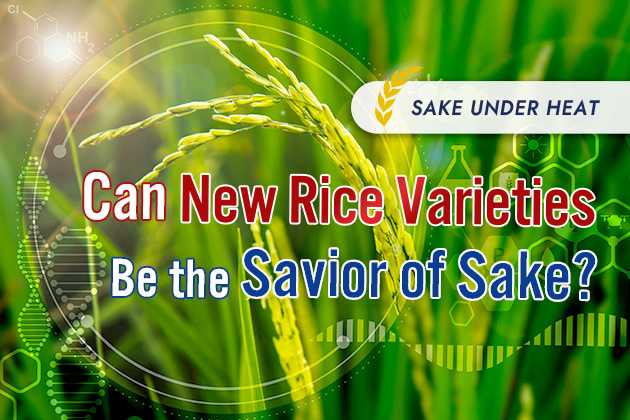
2022.08
07
Round-up of sake ingredients: From rice, rice koji, water to brewer’s alcohol and other auxiliary ingredients and additives
What are the ingredients of sake?
What would be your answer to the question? Many might wonder what else than rice? Or, those who are extremely knowledgeable might wonder how much detail they should include.
In this article, we cover what ingredients constitute sake.
Definition of Japanese sake
Legally, Japanese sake we drink is called "seishu(清酒) / nihonshu(日本酒)". Japanese Liquor Tax Act (Articles 3-7) defines "seishu" as that which satisfies either of 1-3 below as well as that which is below 22% abv.
1.That which is made from rice, rice koji, and water, and has been fermented and pressed (*1)
2.That which is made from rice, rice koji, water, sake lee, and other ingredients designated by ordinance, and has been fermented and pressed (*2)
3.Seishu to which sake lee (酒粕) has been added, and has been pressed
*1: To press is to filter moromi (main fermentation mash) which ingredients have been mixed in and has been fermented (a process also known as "joso (上槽)")
*2: Ingredients designated by ordinance include brewer's alcohol, saccharides (sugars), and acidifiers
Many might see the term "seishu (清酒)" as it is printed on labels.
There is another definition of nihonshu/seishu than Liquor Tax Act. Due to growing interest in sake overseas, the National Tax Agency has issued "Designation of Geographical Indication Nihonshu" in 2015 in order to promote export and enhance the brand value: "Only seishu that is made from rice produced in Japan and brewed in Japan can exclusively claim the indication 'nihonshu'."
Three main ingredients: Rice, rice koji, and water
Main ingredients of sake are rice, rice koji, and water—uncomplicated. Let's take a look at how each of them is used, and what their characteristics are.
Rice, the most representative ingredient
Rice varieties designated for brewing sake are called "sake specific rice (shuzo koteki mai(酒造好適米), or sakamai(酒米))."
Sake specific rice is developed through selective breeding to bear characteristics suited for sake brewing that are distinct from table rice. Ministry of Agriculture, Forestry, and Fisheries' Agricultural Products Standards Rule classifies sake specific rice in the category of brewing brown rice and registers over 120 varieties.
There are mainly five distinct features that characterize sake specific rice.
1. Large grains that are resistant to breaking
2. High incidence of shinpaku (starchy core)
3. Low in protein
4. Low in lipids
5. Soft texture
The first feature, large grains and resistance to breaking is necessary in enduring polishing that is vital to sake brewing. For instance, for daiginjo, rice should have the size and resilience to cracking so it could be polished down to 50% of the original weight.
Shinpaku, in the second feature is the white, opaque part that may appear in the core of the grain. Shinpaku is not completely dense with starch, and therefore soft. Because of shinpaku, koji mold's hyphae can penetrate into the center of the grains, resulting in quality koji.
Features #3 and 4, protein and lipids mark differences between sake rice and table rice. Proteins and lipids are sources of umami when eating table rice, but can cause off-flavors or coloring, or work adversely in generating fruity aroma components in sake brewing. Sake specific rice, for that reason, is more desirable if it contains less protein or lipids.
The last feature, soft texture, makes for easier polishing, and its good water absorption and solubility encourages fermentation, which is important in koji-making and brewing.
Well-known sake specific rice varieties include Yamadanishiki (main production area is Hyogo), Gohyakumangoku (Niigata), Miyamanishiki (Nagano), and Omachi (Okayama). There are other varieties that take advantage of regional climate, resurrected varieties that once got discontinued, and non-sake specific table rice that are used in sake brewing.
Koji, key to sake brewing
"First koji, second yeast starter, third fermentation." As the saying goes, koji is considered key to sake brewing.
Quite distinct from wine which uses ingredients containing sugar, sake's ingredient, rice, does not have any sugar. In order to turn starch of rice into sugar, saccharifying amylase that koji mold discharges is essential. Rice koji is rice on which koji mold has propagated.
Koji mold is a type of fungus, and three kinds--yellow koji mold, white koji mold, and black koji mold are used in sake brewing. Yellow koji mold is mainstream, but recently, white koji mold that is mostly used in shochu making or black koji mold that is mostly used in awamori making are adopted in sake brewing.
Koji making process is called "seikiku (製麹)", and it takes about 2 days. This is a vital step that impacts the quality of the end product.
Click here to learn more about koji.
Water, an ingredient that makes up 80%
Of the ingredients of sake, almost 80% is water.
Other than fermentation and diluting, water is used throughout the brewing process, including washing and soaking rice, and cleaning. If water used outside of ingredients is counted, the volume is 50 times more than the entire amount of rice used.
So naturally, regions where quality water is abundant are known to be sake production areas: the dictum goes "where there is good water, there is good sake."
What, then, exactly is quality water suited for sake brewing?
There are regulations for water to be used for sake brewing that are more rigorous than those for tap water. Minimally, it should be water that is pleasant to drink, and free of cloudiness and dirt, but on top of that, other components such as iron and manganese that can induce coloring and degradation to sake are strictly examined.
Further, hardness of water is a vital factor. Hardness is represented in a figure that indicates the mineral content of water, and has a significant influence on sake flavor. Generally speaking, sake brewed with hard water tends to result in dry, robust flavors with a short finish, whereas sake brewed with soft water tends to produce clear and mild flavors.
Auxiliary ingredients
While the main ingredients of sake are rice, rice koji and water, there are many other items used in brewing. These auxiliary ingredients may or may not be required to be listed on the label. Let's review each of these.
Brewer's alcohol
For better or worse, brewer's alcohol is well-known as a sake auxiliary ingredient. Brewer's alcohol is made mainly from sugar-cane based molasses. The purposes for using brewer's alcohol are to enhance the aroma, raise the alcoholic content, improve shelf life, etc.
Brewer's alcohol is required to be listed on the label. Sake made without adding brewer's alcohol is called junmaishu or junmai-style.
For honjozo, ginjo, and daiginjo categories of premium sake, the volume of brewer's alcohol allowed to be added is below 10% of the total weight of rice used (Liquor Tax Act, Article 86).
Sugars, acidifier, amino acids
Sugars, acidifier, amino acids are required to be listed on the label. Sake that has these auxiliary ingredients added cannot claim to be premium sake, such as junmai or ginjo.
Sugar that is added to sake is not sucrose (table sugar), but usually glucose or glucose syrup, and is used to adjust sweetness.
Acidifier used in sake include lactic acid or citric acid, which are the same components as organic acids that naturally occur in the fermentation process, and are added to adjust flavor balance.
Less used in comparison with acidifier and sugars, but glutamic acids and the other amino acids may be added to supplement umami characteristic of sake.
Ingredients used in sake brewing need to be reported to the tax office prior to production. Therefore, even for adjusting the flavor, it is not added because "it lacks flavor," but it is predesigned taking into consideration other ingredients and the brewing method to include additives at the end of the process to balance the flavor.
Yeast
Yeast is an auxiliary ingredient that is not required to be listed on the label (Liquor Tax Act states that yeast is not designated as an ingredient).
Yeast is used not only in alcoholic beverages such as wine and beer, but also in many food items including bread, miso, and soy sauce. Yeast used for sake brewing is specifically termed "sake yeast (seishu kobo)."
The main role of yeast is to break down sugar that is decomposed from starch by koji enzymes into alcohol and carbon dioxide. In addition, yeast generates fruity aromas that are specific to sake and organic acids that characterize the flavor.
Until around the Meiji Period (1868-1912), sake was brewed with ambient yeast that lived in the building and tools of the brewery and fell into yeast starter and fermentation mash.
But after the latter half of the Meiji Period, the Brewing Society of Japan became successful in cultivating superior strains of yeast and began distributing to breweries throughout Japan. These strains are called Kyokai kobo (Kyokai yeast) and a lot of sake is brewed with these strains today.
There are other cultivated yeast strains developed by prefectures, or flower yeast developed by the Tokyo University of Agriculture that are distributed by respective bodies, and there are brewers who use the ambient yeast or house yeast.
Summary
Learning about sake ingredients enables us to understand the information on the label that we may have only glanced at, expanding our horizons in enjoying sake.
Hopefully this article has equipped you with tools that help you choose your next bottle!
Pickup Articles
2019.01.18
2019.01.25
Trending Articles
Popular Articles
Recent Articles












